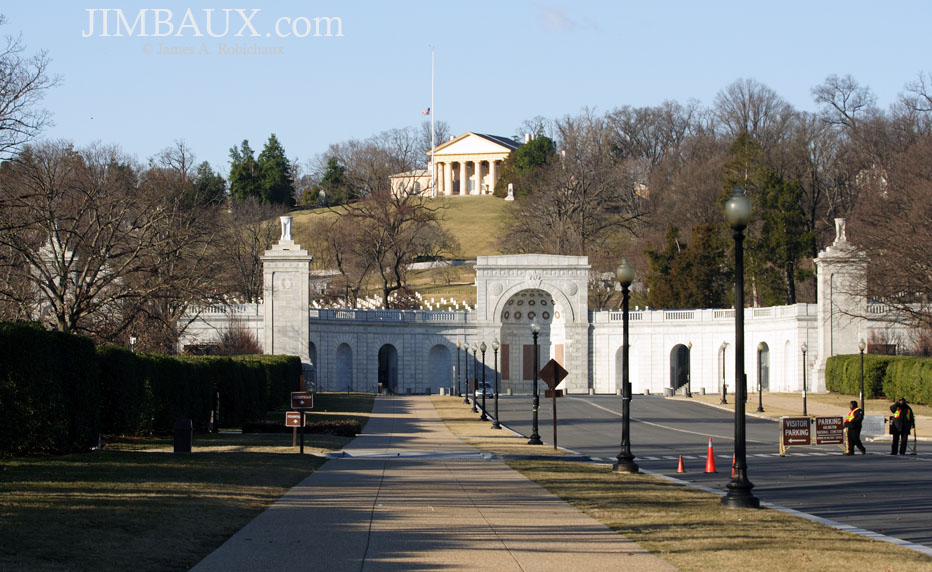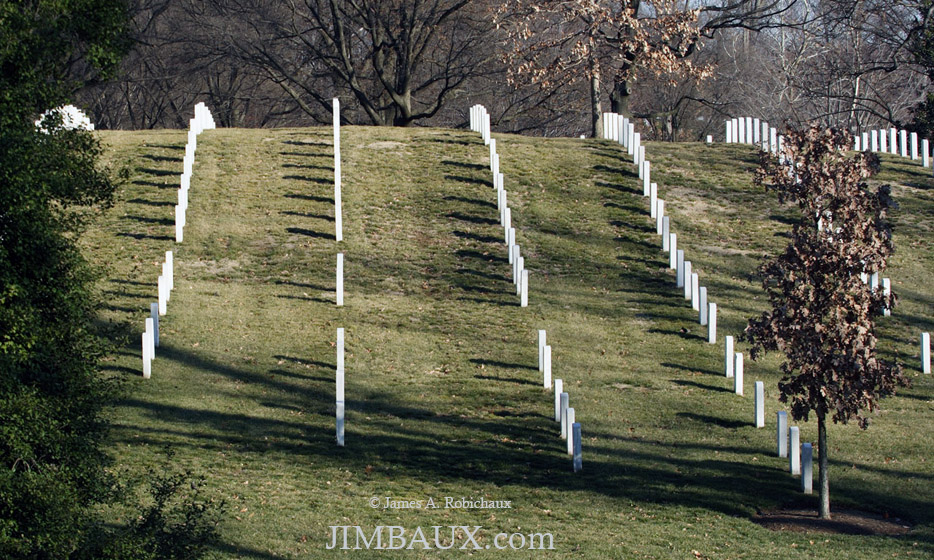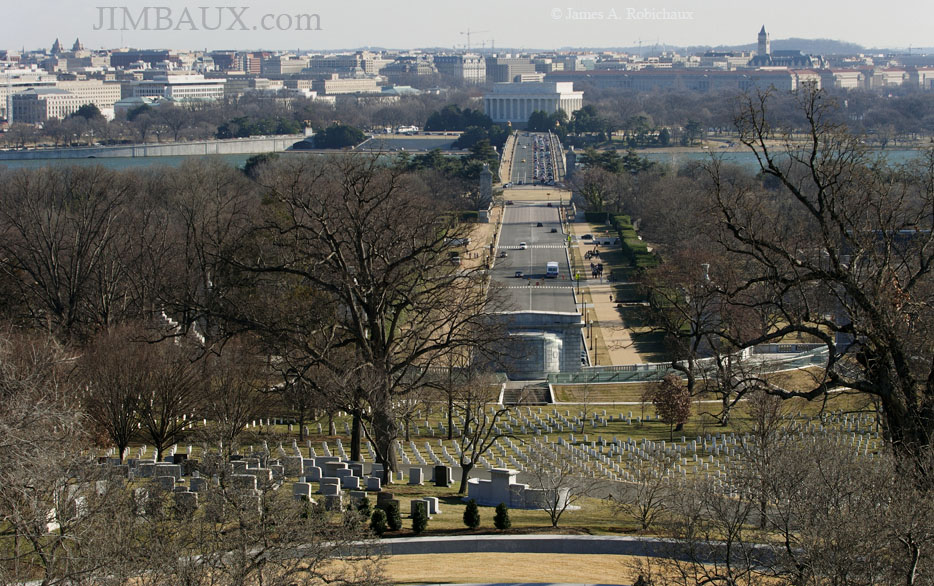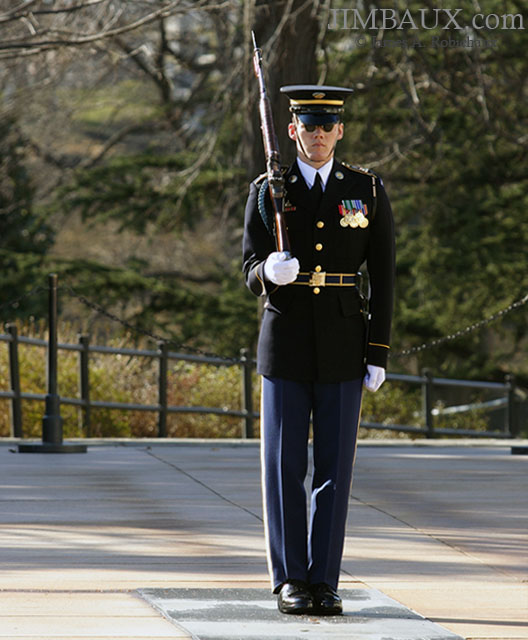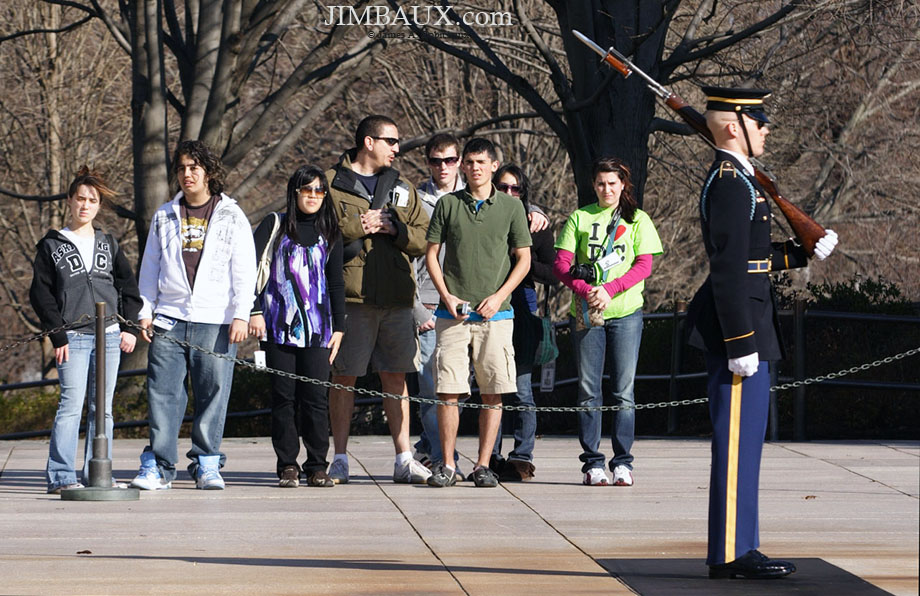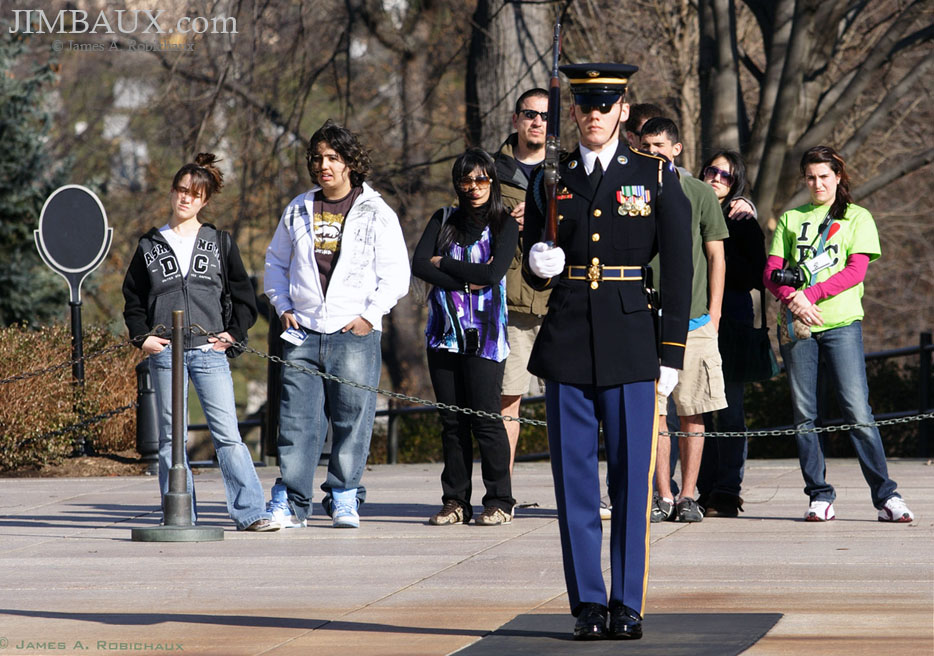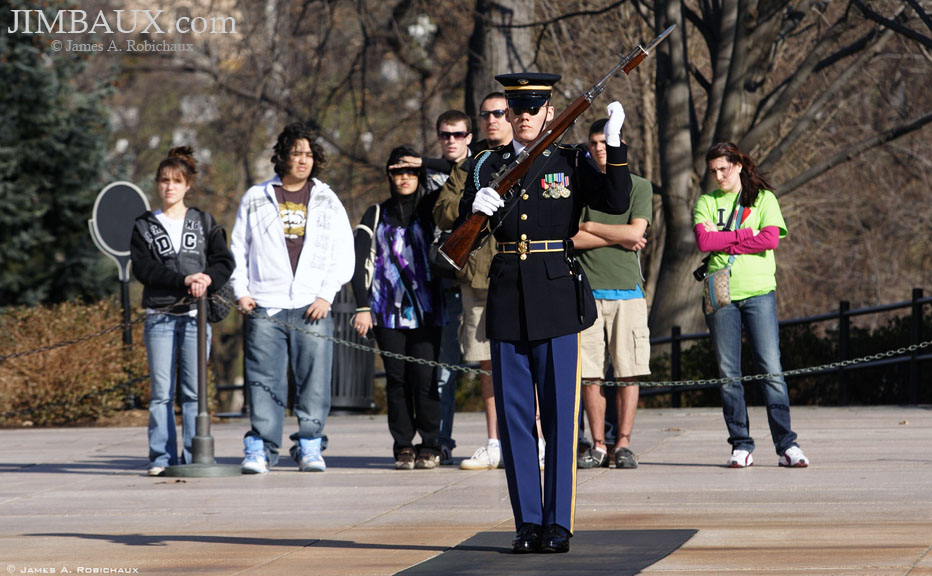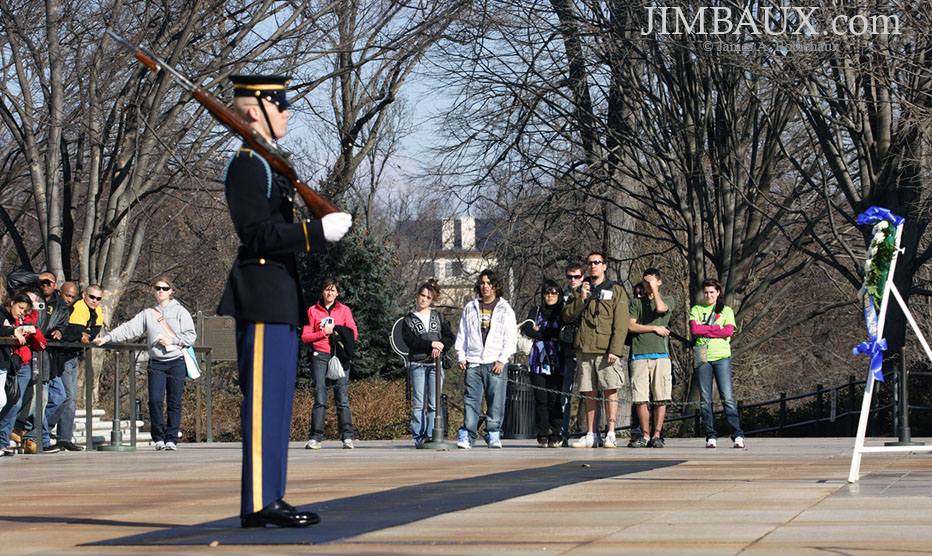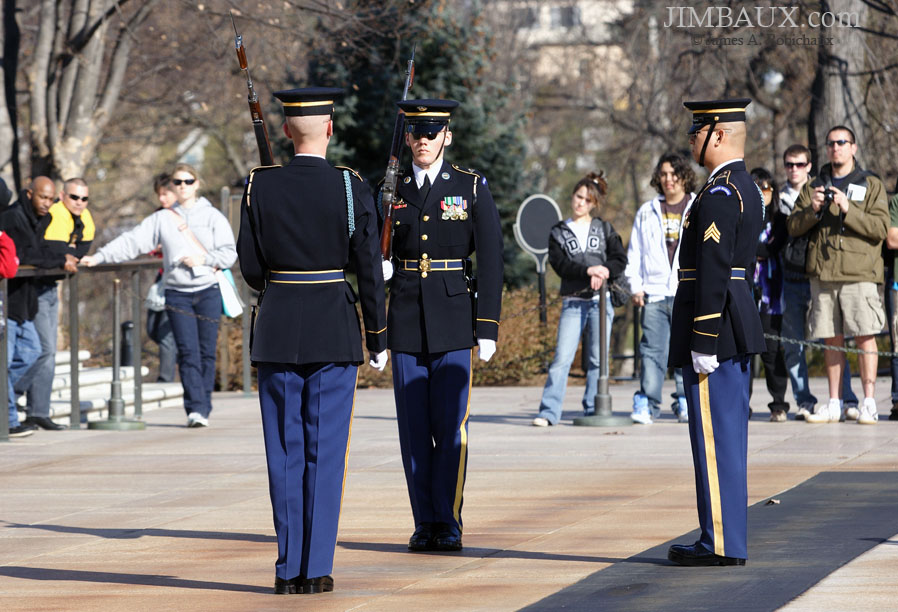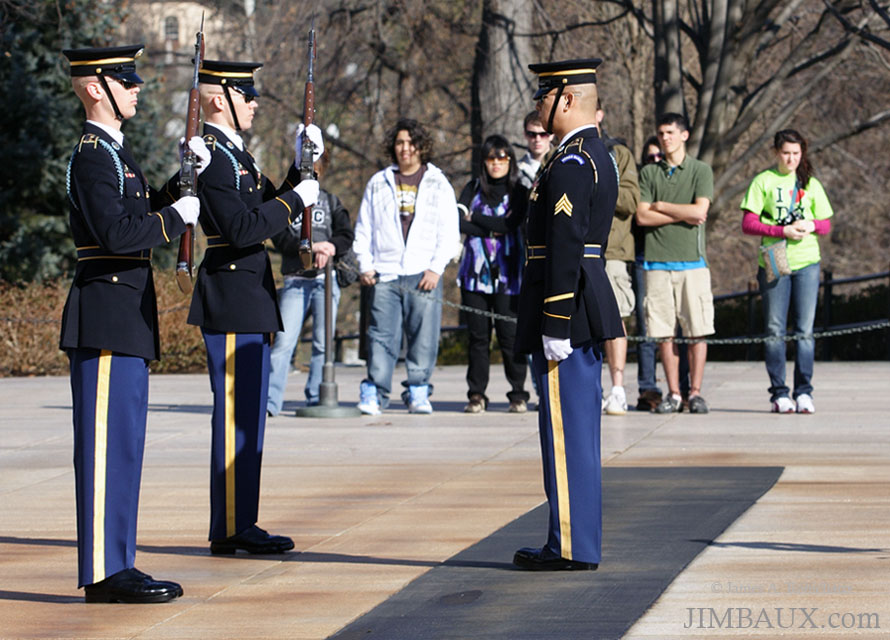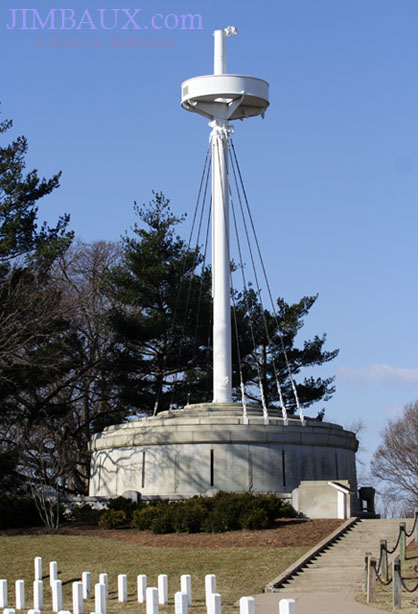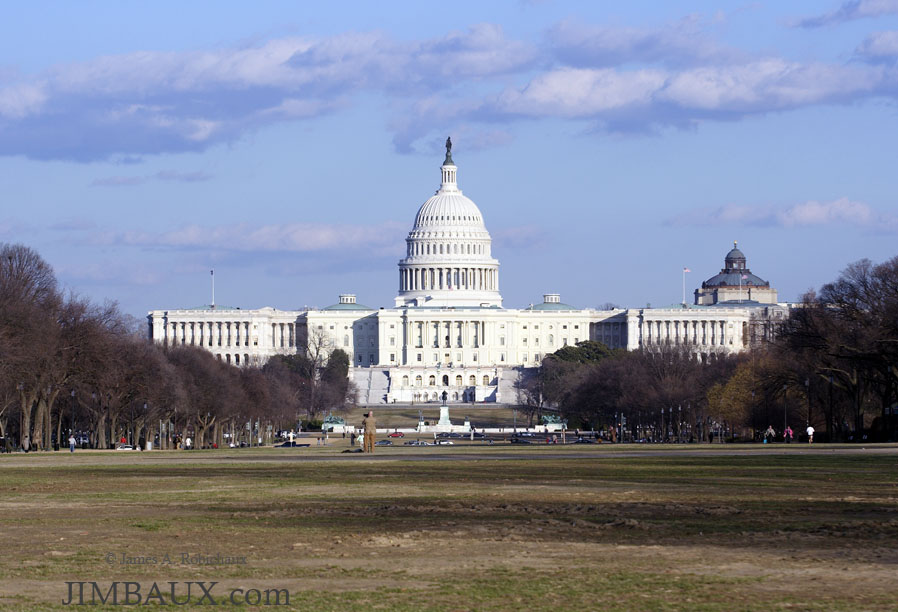Day 4 of our Close Up 2009 week was Independent Study day. It was a Thursday, and the length of the program had been reduced by one day from years past. Capitol Hill Day, which we had wonderfully experienced the day before, had historically been on the Thursday with Independent Study day on Friday and flying home on the Saturday; apparently, cost concerns caused the program to be shortened by a day. Having Capitol Hill Day on a Wednesday seemed too rushed. Oh, well.
The first place that I would take my students on Independent Study day was Arlington National Cemetery, a place that I believe that all Americans should visit at least once or twice, and in a certain frame of mind.
We begin at the Arlington Cemetery Metro station, with a view of Rosslyn in the background.
Perhaps it is ‘appropriate’ that the so-called “military industrial complex” looms over our sacred national cemetery. That is the big Northrop-Grumman building that you see in the center of the picture.
Entering the cemetery, we see the Custis-Lee mansion at the top of the hill.
It may be difficult for you to tell, but the John F. Kennedy gravesite is halfway down the hill from the mansion, right under the mansion in the picture. Shortly, you will see a view in the opposite direction from the mansion. Meanwhile, we slowly walk up the hill.
I hope that you know who that is – and, no, not just his name – buried in the grave seen in the middle of the below picture.
We made it to the top of the hill. You can see where we had been standing for that earlier picture, just to the right of and a little bit past that bus.
In the days that Robert E. Lee lived here (on his wife’s family’s property) before the Civil War, almost none of the buildings you see off in the distance in the District of Columbia were there, and he could have seen the White House, which is slightly to the left of where you now see the Lincoln Memorial. So, Abraham Lincoln’s invitation of Lee to command the Union Army at the start of hostilities was a rather personal and emotional matter projected onto the course of the history of a nation. Upon the Virginia legislature’s decision to secede, Lee felt duty-bound to do the same.
One century and two years later in 1963, President John F. Kennedy came to visit this spot and prophetically remarked that it was the most beautiful spot in all of Washington and that he could stay up here forever. At the very bottom of the above picture, you can see the walkway leading to his gravesite. I agree about the sense of serenity here, and what I have explained in this and the previous paragraph is what I have explained to any student that I brought here.
After this, it was time to take a walk through the valley to the south and up another hill to the Tomb of the Unknowns, which, in the below pictures, is unseen to the right of the frame, since my images focused more on the honor guards, the changing of the guard, and the people watching them.
It is another quiet and serene place, and the students figured this out mostly themselves.
That was my Coloradoan roommate in the background with some of his students.
Five months later, I would visit the tombs of the unknown in both England and France, and a year after that I would visit the Canadian Tomb of The Unknown Soldier.
I actually got invited into the guard office under the concrete here in 2005 when I had a student whose cousin had gotten killed in Iraq the week before. (She got invited inside, and I and the rest of the students with me went with her.)
For the span of a little bit more than five years during which I made these trips, I was intensely passionate about the subject matter of this post and the three Close Up posts that preceded it.
In contrast, three years to the day after these pictures were taken, I was taking a few pictures of trains on a Sunday, having finally learned to appreciate home after hoping and trying to get away for so long.
I just could not see that, see the appreciation, the truth, when I was seeing the truth – or more likely the fact(s) – of these pictures.
The dedication of these guards is respectable.
Witnessing this interesting spectacle, though, with all of its great dedication, is no longer close to the top of my list of things to do; I have done it, a few times, and I have changed – i.e., grown – as a person since these times, but if you have never been there, you should go, see, and listen, and feel.
Actually, the last time that I went to Arlington Cemetery at all was two years and one month after these pictures were taken, when I witnessed and photographed the burial of the last-living American soldier to have served in World War I; I did not visit the Tomb of the Unknowns on that visit.
Again, I don’t think that I need to return, perhaps ever, but if these images inspire those of you who have never visited the site to visit there, I guess they have served a larger purpose.
After that, we visited the unremarkable tomb of Audie Murphy; its unremarkableness is remarkable! So is the fact that I apparently neglected to grab a picture of it. Nearby, though, I got a shot of the mast of the USS Maine.
The sinking of the Maine in Havana Harbor led to the start of the Spanish-American War, even though the evidence that Spain (or any other foreign entity) was responsible or in any way involved with the ship’s sinking was very weak at best.
We then left Arlington Cemetery. I think that we went to the Holocaust Museum next, which was also my standard practice on Close Up’s Independent Study day, but I don’t recall what we did after that. I think that we went to some of the Smithsonian Museums, but the only evidence that I was on The Mall is this.
So ended our last full day in Washington for Close Up 2009, my last such experience. It was time to get back to the hotel for the banquet. Tomorrow, we would get to see and do a few cool things before going home. Stay tuned for that.
Jimbaux

